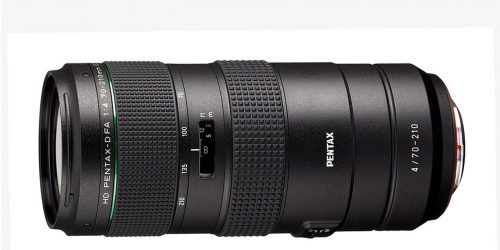

The other five contacts are used to encode the lens's aperture range. If it is, a pin on the lens extends slightly and makes contact, while if the lens is at any other setting the pin is retracted and does not make contact. One is slightly recessed and allows the lens to indicate whether the aperture ring is set at 'A' or not. Six electrical contacts are added to the bayonet ring.
#OBJEKTIV TIL PENTAX MANUAL#
Other, numeric settings are used for manual aperture modes- aperture priority and full manual mode. The lenses add an 'A' setting on the aperture dial, which gives the body control of the aperture. This allows the body to easily set a specific aperture, since the relationship to F stops is linear. The aperture on the lens is set from the body by the same stop-down lever found on the original K-mount, but on K A-lenses this lever is proportional to the area of the aperture opening, rather than the diameter as on previous lenses. It is completely backward-compatible with the original K-mount. It was introduced in 1983, and is supported by A-series and P-series bodies Pentax lenses that support it are marked 'SMC Pentax-A'. It allows the lens's aperture to be set by the body, and thus permits shutter priority and program auto exposure modes. The K A-mount is derived from the original K-mount. Pentax A 50 mm lens displaying the K A-mount The 35–70 mm lens can be used on all other Pentax K-mount bodies in manual focus mode, but it must be used stopped down on "crippled" K AF bodies. The ME F can use all Pentax K-mount lenses which feature an aperture ring. K F and the ME-F are similar in many ways to the system used by Canon in the ill-fated Canon T80, introduced several years later. The lens was somewhat large and cumbersome since it had to enclose both the focusing motor (with gears) and batteries to power it.

Only one camera and one lens ever used this mount, the Pentax ME F and SMC Pentax-AF 35-70/2.8. One permitted the lens to turn on the camera's metering and focus sensors, two focused the lens (towards and away from infinity) and two appear to have been unused and may have been reserved for future functionality. The two were connected via five new electrical contacts on the bayonet mount itself. This autofocus system used sensors in the camera body and a motor in the lens. The K F-mount was Pentax's first attempt at an autofocus system. Pentax ME F and SMC Pentax-AF 35-70/2.8, the only products using the K F-mount. K-mount lenses can be used on all Pentax bodies, but are restricted to stopped down mode when used with "crippled" K AF-mount bodies (see below). These K-mount bodies cannot use lenses that lack an aperture ring, such as FAJ or DA. Lenses that support it include those labelled 'SMC Pentax', 'SMC Pentax-M' and 'SMC Pentax-A'.
#OBJEKTIV TIL PENTAX SERIES#
It allows the diaphragm to close to the desired setting while the film is being exposed, and opens it again after the shutter closes.īoth of these linkages are arranged so that they are aligned and spring-loaded by the act of inserting the lens and turning it until it locks.īodies equipped with the original K-mount include the K series, the M series except the ME F, and the LX. When the shutter is released, so is this lever. When setting up a shot this keeps the diaphragm fully open. Opposite this is the diaphragm release from the lens which extends into the camera body and holds open the spring-loaded diaphragm of the lens. A slot between two of the bayonet tabs on the lens allows the stop-down coupler from the camera to sense the aperture setting on the lens and adjust the light meter display accordingly. The only linkage with the camera is mechanical and involves the aperture. 70° clockwise turn (when looking at the front of the camera). The lens is locked into the camera with an approx. It was introduced with the K series of cameras. The original K-mount is a simple bayonet connection with three tabs. However, the plan failed to work out and the two firms parted company amicably, but Pentax retained the lens mount and at least one Zeiss lens design for its own use. Originally designed by Zeiss for an alliance with Pentax, it was intended to be a common lens mount for a proposed series of cameras and lenses. In general, the term K-mount may refer to the original K-mount, or to all its variations. The Pentax K-mount has undergone a number of evolutions over the years as new functionality has been added.


 0 kommentar(er)
0 kommentar(er)
